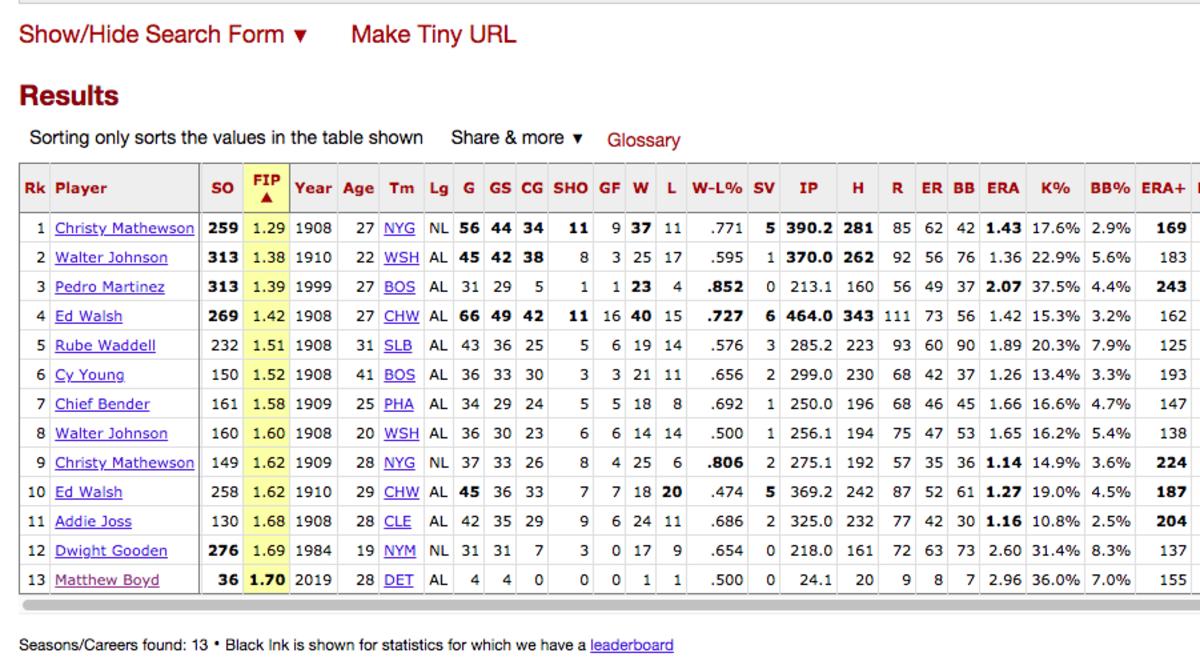Mike Trout, Christian Yelich and Our Favorite Small Sample Sizes of 2019

Now that we’re into the second half of April, there is, finally, some sense of order to most of baseball’s statistical leaderboards. The key word there is some, however, which means there is still chaos to be found. So here’s a selection of the game’s weirdest small sample size quirks, while we still have them to enjoy. There are some that might ultimately mean something and most that will definitely mean nothing, but for now, they’re here, and they’re weird, and they’re worth noticing:
Christian Yelich’s Performance Against the Cardinals
The reigning NL MVP has 28 plate appearances in six games against the Cardinals. He has eight home runs. Eight! (He has one home run against all other teams combined.) Throw in seven walks, two singles, and a double, and Yelich has looked not just like a cardinal’s most fearsome natural predator but like some sort of insane virus genetically engineered specifically to exploit every weakness in a cardinal’s system.
Mike Trout’s Walk-to-Strikeout Ratio
There was a time when Mike Trout’s strikeout and walk statistics were… normal. They were the one feature of his game that didn’t include any video game-crazy numbers. In 2014, for instance, when he won his first MVP, he finished 18th in walk percentage (11.8%) and 14th in strikeout percentage (26.1%). See? Normal!
But normal isn’t good enough for Trout, obviously. Over the years, he’s steadily been increasing his walk rate, until last season, when he led the league here for the first time (20.1%). That’s all well and good—for the best player of his generation just to get even better, in an area where he didn’t particularly have to, simply to be the best at everything—but it was still, in some sense, in the realm of normal. It wasn’t better than the best from Joey Votto. It didn’t signal any larger change in his approach; his strikeout percentage hovered right about where it had been historically, giving him a walk-to-strikeout rate of 0.98—almost even, but not quite—the fifth-highest in baseball.

That was 2018. 2019? This season Trout has walked 16 times. He has struck out five. He’s still swinging. He still has all his power—and then some, as you can see by his .816 SLG. (Not OPS. SLG.) He’s just… walking all the time and striking out almost never. His eye is perfect. His BB/K is 3.2.
Amazing. And it gets even more so. Look up the five pitchers to strike him out—Frankie Montas, Adrian Sampson, Jeffrey Springs, Jhoulys Chacin, Mike Minor. Yep. Okay. Sure!
Greg Garcia’s Average Launch Angle
The Padres infielder only has a handful of batted balls so far (11). This is a small sample size even in the realm of small sample sizes. And yet it’s notable, because his average launch angle on those batted balls is -8.1 degrees. He’s hit the ball in the air exactly once. That’s it. There are some guys whose launch angle lives typically below zero, sure, but this much is extreme for any regular position player. There’s never anything good associated with a negative number as an individual statistic, but there is something almost poignant about this one—a guy who, literally, cannot get off the ground.
Matthew Boyd’s FIP
Any Matthew Boyd stat feels weird—in a good way!—because none of these would have made sense last month for the Tigers' lefthander. The 2.96 ERA, 179 ERA+, 40% strikeout percentage, 0 home runs… none of it. The 1.01 FIP, though, is on another level. (Sure, FIP’s significance is debatable, but the point of this exercise is neither to predict future performance nor to most accurately assess the nuances of past performance. It’s to look at fun stats, and this is perfect.) Boyd’s FIP is not just the best in baseball. It’s closer to being twice as good as second place as it is to second place itself (Carlos Rodon, come on down). It’s so good that you can search for the best of all time and get this table on Baseball-Reference’s Play Index:

Not bad company! Boyd’s probably not going to be in this group for long, no, but it’s nice while it lasts.
Tim Anderson’s BABIP
It’s too simplistic to say that batting average on balls in play measures luck. BABIP considers speed, defense, batted ball approach, all sorts of relevant factors that determine how often a ball in play will go for a hit. But, yes, luck is there, too. Some of it can’t be explained away by anything else. Some of it just is.
The highest BABIP in baseball history belongs to 1911 Ty Cobb—.443. In other words, 44% of his batted balls became hits. It’s a wild number, stupidly so. He led baseball in hits, runs, doubles, triples, stolen bases, batting average, slugging percentage, and OPS+. He won MVP. That was a .443 BABIP.
Tim Anderson’s BABIP is .500. If the White Sox shortstop puts it in play, it’s a hit as likely as its not. There’s speed, defense, batted ball approach, all sorts of relevant factors. And, at the center of it, the red-hot core required for any quirk of small sample size, is what can’t be explained away. It’s the luck.
Albert Pujols’ Sprint Speed
Albert Pujols is slow. You know this. He’d never been especially fast—it’s okay, he had other virtues—and now he’s 39. He’s never been baseball’s slowest player, though. Not yet. By Statcast’s sprint speed, he has fallen in the third percentile (2018), first percentile (2017), fourth percentile (2016), and eighth percentile (2015).
Now?
Albert Pujols is in the zeroth (zeroeth? zero-end? zero-rd?) percentile for sprint speed in 2019. Here, then, is one stat that might actually stick.
